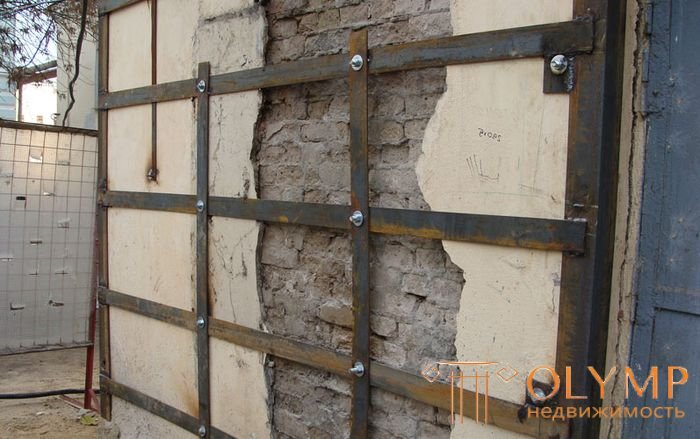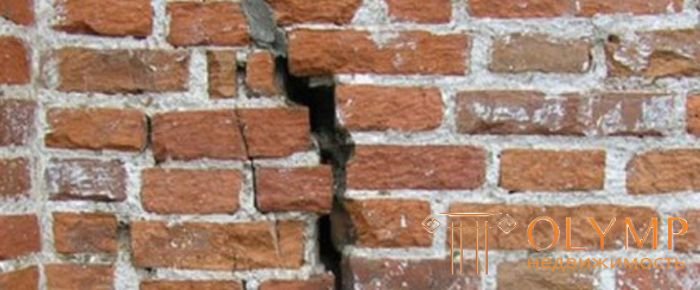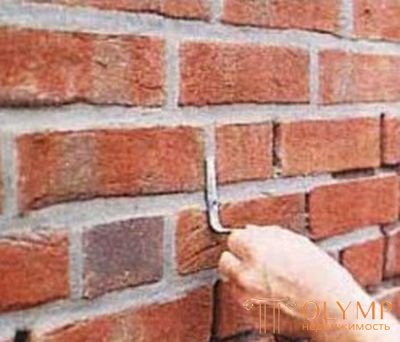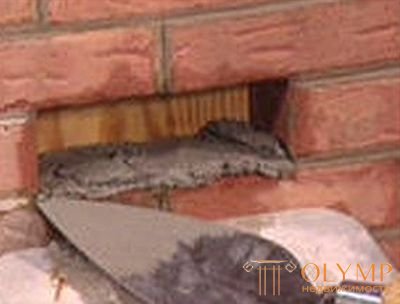
Brickwork with high strength characteristics can last for a very long time. However, various factors can cause the occurrence and accumulation of defects in it that can destroy it partially, and sometimes even completely. In order to maximize the life of the entire building, it is necessary to make timely repairs to the brickwork of the outer walls, and sometimes the internal partitions, made of brick.
Knowledge of the reasons for the destruction of the brickwork of the walls often helps to prevent these negative phenomena and reduce the costs associated with the repair. One of the main reasons that shorten the life of exterior masonry is the penetration of water due to the porosity of the brick. Freezing, water expands, thus causing the destruction of bricks and cement mortar. The integrity of the masonry can be disturbed by vibrations caused by the operation of some equipment or by the proximity of large transport arteries. Temperature drops also play a big negative role in this regard.

Why are there cracks in bricklaying?
Cracks in the walls of a brick house can be caused by the following reasons:
The reasons for the destruction of masonry may lie in the illiterate use of buildings, as well as in the failure to implement such preventive measures as:
Another read:
How much does a red brick stove cost?
How to build a house of Lego bricks?
The appearance of the first cracks and deformations is not at all a signal for the immediate start of repair. Before embedding the brick wall, the following preliminary measures should be carried out:
If these measures are neglected, then the deformation of the masonry can continue even after its repair.
Observe the dynamics of the processes occurring in the masonry should begin with the appearance of cracks whose depth is 10 mm or more. Observation is done by measuring their depth. In addition, paper or plaster beacons can be installed along the crack. If the walls are plastered, then the plaster in the places of installation of the beacons is knocked down. The seams in the brickwork are cleaned of dirt and washed with water.
The restoration of the brickwork of the external walls is most effective in cases where the causes of the negative processes that have arisen are eliminated and when the beacons show that the deformation process has ceased.
Install a plate beacon to observe the crack:
The most common defects occurring in masonry are:
Consider the technology to eliminate these defects with your own hands.
We recommend these articles:
What is needed paint for bricks for outdoor work?
How to plaster a brick wall?
Repair of cracks in the brickwork should be made only after their increase stops. Otherwise, all efforts will be in vain. If the crack width does not exceed 5 mm, cement mortar can be used to seal it. Before it should be cleaned of debris and moistened from the inside. For cleaning, you can use brushes, manual grinders, compressed air. To ensure better adhesion of the mortar to the bricks, it is recommended to knock the edges of the gap with a hammer.
If the cracks in the brickwork are of medium size, when their width is 5-10 m, they are repaired in the same way, but with the addition of fine sand.
Cracks wider than 10 mm wide are critical and should be fixed immediately. To eliminate them on your own, you can use one of the following methods:
When deciding how to seal vertical cracks in the brickwork, it should be borne in mind that this can also be done with foam. In this case, the foam, frozen in the gap, is cut to a depth of about 2 cm, and the remaining space is filled with cement mortar.

We repair the seams of the brickwork
Repair of brick walls is also necessary when the cement that binds the bricks begins to crumble and fall out. When the damage is of a single character, the defect will be removed quite easily on its own. Repair and sealing of the seams of the brickwork in this case is performed in the following order:
Fresh solution used for repair should contain a minimum amount of moisture. This allows him to be better kept in the seams. The first step is to fill the vertical joints. The horizontal seams are filled in second place. As you approach the upper wall, the used solution should be drier than in the internal space of the seams.

Change damaged brick
Weathered brickwork and the penetration of moisture into it can cause cracking or even complete destruction of one or several bricks at once. Since such “holes” in the walls turn into an additional destructive factor, with the replacement of damaged bricks you should never pull.
If a damaged brick is in a prominent place, then it may be difficult to find a replacement for it. This is due to the fact that the shades of these products may be different in different batches. Moreover, even if there were bricks from the previously used batch, then their color will be different, since the bricks installed in the masonry are subject to fairly rapid fading.
The approach to replacing damaged bricks depends on the degree of their integrity. If there is only a small crack on the brick, then the repair technology allows for such a brick to be only unfolded by a crack inside the masonry.
To extract brick from brickwork that has lost its integrity, proceed as follows:
In the case when it is decided to reuse the brick, after its removal from the masonry it should be lowered into a bucket of water. If a new brick is used, it should be soaked at least one hour before installation.
The hole where the damaged brick was located must be cleared of residual old cement. Having irrigated it with water, a solution pillow is applied on its bottom. On prepared for replacement and soaked brick also put a solution from the sides and from above. After that, the brick is inserted into the space prepared for it. The voids remaining in the seams are filled with an additional amount of solution.
Restoration of a brick wall that has undergone deformation should be preceded by a clarification of the reasons for it. It may well happen that you first have to strengthen the foundation, eliminate the causes that caused it to subside, for which it may be necessary, for example, to repair the laid water supply system nearby, organize the removal of groundwater or take other measures.
The fact of deformation of brick walls can be installed:
Before you start repairing the brickwork of deformed walls, you must:
The destruction of the brickwork due to its deformation is prevented by the method of partial or complete disassembly of the walls and their transfer in combination with the reinforcement produced according to the calculations.
Perhaps interested in:
Production technology hyperpressed brick.
The average price of facing the house is brick.

How to strengthen the brickwork?
A reliable way to preserve the integrity of any brick wall is to strengthen it. Is it possible and how to strengthen the wall of brick on your own?
Of course it is possible. Currently, the reinforcement of the brickwork is carried out using the following clips:
Strengthening the walls with these clips allows you to fully restore their bearing capacity. However, reinforcement should be preceded by embedding cracks in masonry, as well as other restoration operations.
Reinforced clips are made from:
For this, the selected material is attached with studs or anchors on one or both sides of the wall. Improvement of physico-mechanical characteristics is achieved due to the application of cement-sand mortar on the yoke.
This type of reinforcement is provided by durable steel reinforcement and fine-grained concrete mix. This belt is able to take on a significant proportion of the load falling on the brickwork.
However, it should be remembered that such a belt has a lot of weight, which significantly increases the load on the building foundation.
Composite materials made of high-strength fibers (glass and carbon fiber) are the most effective for strengthening brick walls.
A feature of the clips of this type is that with their help the strength in vertical structures for compression increases, and also the strength in cross sections increases for shear or shear.
Steel construction can significantly increase the bearing capacity of the brickwork. It is assembled from thick reinforcing bars, strip steel, and steel corners.
This holder is covered with a metal grid, which is applied a layer of cement mortar.
Nowadays, a modern method of strengthening brickwork is widely used, where ordinary cement masonry cement is replaced with polymer cement mortar. This method makes it possible to increase the carrying capacity of brickwork by 60%, without increasing their mass.
Thus, proper maintenance of brickwork, timely repair and repair of cracks in brick walls make it possible to significantly increase their strength, reliability and durability.
Что бы оставить комментарий войдите
Комментарии (0)